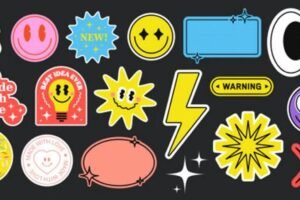Introduction
Milia (also called milialar) are tiny cysts. They form just below the surface of the skin, most commonly on your face. Each tiny, pearly white cyst is called a milium. The word ‘milialar’ is used when there is anything other than one single cyst. Milia may appear as creamy-white or pale yellow bumps; they can also be found on any skin tone, with a dusty pale-blue colour being seen in people of darker complexions.
Traits
Even though milia sometimes look like tiny whiteheads or small pimples, the condition is not a form of acne. They may occur alone or in response to something else, such as injury to the skin.
Milia are harmless; they will go away on their own and don’t need any treatment. But there are some things you can do to eliminate these little cysts now, which will help keep them under control for good.
Milia are tiny lumps made up of dead skin cells (and occasionally hair follicles). They can pop out one at a time or in clusters. A single lump size of 1–3 mm is typical for each cyst, although they may be even larger.
Milia can appear on any part of the body. It is most typical for milia to develop on the face, but in recent years cheeks, nose, and eyes have also become growth sites. Most milia go away after a few weeks or months.
Anyone can get milia, regardless of skin colour, age, or sex. It is most common among newborns, with about 50% of babies born with milia on their skin. The milia on their newborns’ skin sometimes leads parents to believe that they’re suffering from baby acne and other skin blights. They mistake baby acne for milia. However, baby acne will not usually occur until the infant is two weeks old.
As with any illness, older children and adults are more likely to develop milia if they:
- Don’t look after their skin properly
- Use oil-based skin care products
- Suffer from a skin disease like dandruff or rosacea
- Don’t get enough shut-eye
- Use steroid medications for long periods
What Causes Milia?
Our body is constantly shedding skin. This means that old skin cells enjoyed their time in the sun, fell away and were replaced by new, healthy skin cells.
Occasionally, however, old skin does not fall off as it should and becomes trapped beneath the skin’s surface. The old skin cells harden, forming little cysts. These hard, round nodules are known as milia.
People may develope milia for any number of reasons. Milia is particularly common in babies because their skin is still adapting to shedding its dead skin cells.
For older children and adults, the cause of milia depends upon what kind they have.
Here are two major types of milia.
These are:
Primary and secondary
Primary Milia
The process noise is born, and occasionally old skin cells are trapped under the skin’s surface. Over time these small cysts become milia.
Types of primary milia include:
• Congenital milia:
Milia of this category appear spontaneously and are commonly found on the face–especially on the nose.
• Benign primary milia in children and adults:
These can develop spontaneously on the genitals, nose, cheeks and forehead.
• Milia en plaque (MEP):
This is the rare type of milia that affects people whose gender at birth was female, and who are now in their 40s to 70s. Individual milia congregate in a patch on skin that can reach several cm in size.
• Multiple eruptive milia:
This rare condition causes itchy, cysts (nodules) to form as a group on your face and upper arms.
• Genodermatosis-associated:
Type of milia that is related to skin-related genetic disorders such as Brooke-Spiegler syndrome, pachyonychia congenital type 2 and basal cell nevus syndrome.
Secondary Milia
Milia secondary to these skin problems might occur after any kind of skin injury, including the use of medication to treat skin disease. They are believed to develop in sweat ducts due to clogging.
Secondary milia types:
• Disease-associated:
Milia that arise with blistering skin diseases such as epidermolysis bullosa.
• Medication-associated:
Milia that result from prolonged use of topical steroids or nonsteroidal anti-inflammatory drugs (NSAIDs).
• Trauma-associated:
Milia that frequently develops after skin grafting, burns, or radiotherapy.
How to Remove Milia
Milia are harmless, benign growths that usually do not require treatment. In the case of congenital milia, they generally fall off by themselves.
Other kinds of milia do not go away by themselves and may need to be taken out. If you want to get rid of the milia, it is your choice in order to remove them and improve how they look. Others may have milia taken out if the cysts cause pain.
When you have finished with milia removed, talk to a dermatologist (a doctor who specializes in the skin and nails) about which options might work best for you. Remember that milia can recur even after treatment, so your dermatologist may offer some solutions to prevent them from coming back.
There are several different ways to get rid of milia, including extraction, chemical peels, and retinoids.
Extraction
A tiny incision is made by your dermatologist using a needle or scalpel. The provider would then apply force to remove the milia from the skin. This procedure is also termed deroofing.
Chemical Peels
An exfoliant helps the skin get rid of old cells and make new, healthy cells. A chemical peel breaks down dead skin cells that are causing milia.
Common active ingredients in a chemical peel include
GPIO centre Glycolic acid:
Recurrent Chile esthetic acid whooping finds this hard to figure out.
Border Side
This powerful alpha hydroxy acid (AHA) can help remove dead skin cells and unwanted sebum, letting the healthier cells show through.
Lactic acid:
This type of AHA is milder than glycolic acid, and therefore it is more suitable for sensitive or dry skin.
Salicylic acid:
Salicylic acid is a beta hydroxy acid (BHA) and unlike glycolic and lactic acids, it is an oil-soluble ingredient that may help to slough off pore-clogging sebum.
Retinoids
Topical retinoids are another treatment option. They are derived from vitamin A and work well in removing whiteheads. The milia is applied medication by a dermatologist. Retinoids are also commonly used for the treatment of acne, particularly inflammatory forms.
The U.S. claims retinoids for skincare:
- Retin-A, Atralin, Avita (tretinoin)
- Differin (adapalene)
- Arazlo, Avage, Fabior, Tazorac (tazarotene)
Milia: Can You Do It Yourself?
Don’t try to pop, scratch, or pick off milia. This may lead to pain and infections, scarring and scarring. If you’ve tried over-the-counter or prescription treatments like exfoliators or retinol and would like to opt for the surgical option, discuss with your dermatologist about having your milia professionally removed at their office. They can assist with ensuring removal is completed safely as well as minimising your chances of scarring.
Prevention
You can’t prevent milia from happening entirely but there are steps you can take to reduce how often it happens on your skin.
This includes:
- Wash your face with warm water and a mild soap every day. Gently pat your skin dry.
- Do not use oils or lotions formulated for adults on your baby because infant skin is sensitive
- Avoid spending many hours in the sun
- When you go outside wear sunscreen with at least SPF 30
A rapid overview
Milialar (milia) are tiny benign cysts that arise from a blockage of old skin cells. They’re frequent in infants, but can occur in people of any age. They might appear out of the blue (primary milia ) or be a result of skin damage or drug intake (secondary milia ).
One should not attempt to remove milia by lancing them open, squeezing or scraping at them. They generally drift off by themselves within a couple of weeks. Some types of milia in older children and adults may last much longer. If it becomes necessary, a dermatologist may extract your milia for you.
FAQs
What’s the causing of milia?
Dead skin cells trapped under the skin surface cause milia. This eventually leads to the small, white or yellowish bumps which characterize this infirmity.
What does milia mean?
Milia are the little white or yellowish cysts which are typical on our skins including around eyes, mouth, cheeks and forehead. The cause of the humps is generally dead cells trapped underneath the skin’s surface.
How To treat milia best?
The best treatment for milia usually involves gentle exfoliation in order to remove dead skin cells and promote the dissolution of cysts. This can be done through regular cleansing and exfoliating with mild scrubs or other chemical exfoliants containing ingredients like alpha hydroxy acids (AHAs) or beta hydroxy acids (BHAs). In some cases, a dermatologist may need to extract stubborn or persistent milia– or at least give them a squeeze.
What is a milia in generation?
Milia in pregnancy is milia when a woman is pregnant. The hormonal changes that occur during pregnancy can sometimes set off an increase in skin oils, which can lead to milia forming. Also changes in skincare routines or sensitivity to specific products during pregnancy may act as catalysts for the development of milia.









